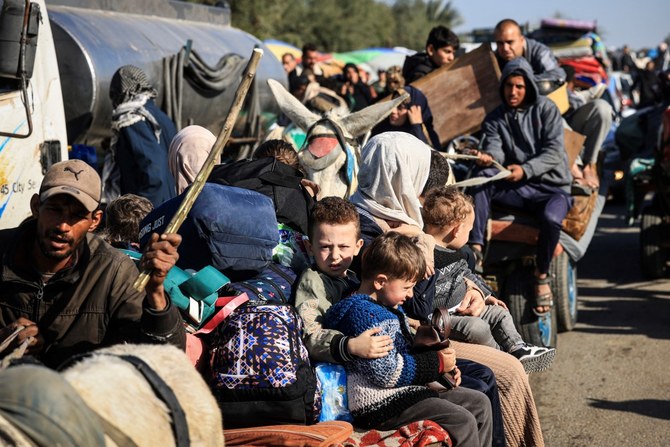GAZA/DOHA/JERUSALEM, (Reuters) – Israeli forces, advancing deep into western Khan Younis in Gaza’s bloodiest fighting of the new year so far, stormed one hospital and placed another under siege on Monday, cutting the wounded off from trauma care, Palestinian officials said.
Troops advanced for the first time into the al-Mawasi district near the Mediterranean Coast, west of Khan Younis, the main city in southern Gaza. There, they stormed the Al-Khair hospital and were arresting medical staff, Gaza health ministry spokesman Ashraf al Qidra told Reuters.
There was no immediate word from Israel on the situation at the hospital. The military spokesperson’s office had no comment.
The Palestinian Red Crescent said tanks had also surrounded another Khan Younis hospital, al-Amal, headquarters of the rescue agency, which had lost contact with its staff there.
Qidra said at least 50 people were killed overnight in Khan Younis, while the sieges of medical facilities meant dozens of dead and wounded were beyond the reach of rescuers.
“The Israeli occupation is preventing ambulance vehicles from moving to recover bodies of martyrs and the wounded from western Khan Younis,” he said.
The Israeli military spokesperson’s office had no immediate comment on the situation at Al-Khair hospital.
Israel says Hamas fighters operate from in and around hospitals, which Hamas and medical staff deny.
“Hamas embeds its operation within and under hospitals and other medical facilities,” said Elad Goren of COGAT, the Israeli defence ministry branch that coordinates with the Palestinians. “A particular effort led by a dedicated team has been put on making sure that civilians have access to medical care.”
Residents said bombardment from air, land and sea was the most intense in southern Gaza since the war began in October, as Israeli tanks surged across Khan Younis from the east towards the Mediterranean coast.
Video filmed from afar showed scattered civilians wandering a ghost city, crowded with tents with abandoned laundry flapping on lines, as gunfire rattled and columns of smoke rose into the sky.
Israel launched an offensive last week to capture Khan Younis, which it now says is the principal headquarters of the Hamas militants responsible for the Oct. 7 attacks on southern Israel that killed 1,200 people, according to Israeli tallies.
The newest phase of the war has brought fighting deep into the last corners of the enclave now packed with those who fled bombardment. At least 25,295 Gazans have been killed since Oct. 7, Gaza health authorities said in an update on Monday.
The majority of Gaza’s 2.3 million residents are now penned into Rafah just south of Khan Younis and Deir al-Balah just north of it, crammed into public buildings and vast camps of tents made from plastic sheets lashed to wooden frames.
BURIED IN HOSPITAL GROUNDS
At Nasser Hospital, the only major hospital still accessible in Khan Younis and the largest still functioning in Gaza, video showed the trauma ward overwhelmed with wounded being treated on a floor splashed with blood. Relatives wailed, surrounding small wounded children being treated several to a bed.
Men were digging graves inside the hospital grounds because it was no longer safe to venture out to the cemetery. Authorities said 40 people were buried in the hospital grounds. A man placed the tiny body of a toddler wrapped inside a white shroud into a shallow hole in the sand.
“It’s very difficult to leave the complex and go to any cemetery and bury them because we’re under siege and anyone who leaves the complex is targeted,” said Abdelkarim Ahmad, participating in the burials.
“Last night we lived through a horrifying night – the shelling wouldn’t stop for even one minute. Buildings would shake with us inside, shrapnel would fall on us.”
The Israeli military made no mention of the huge battle in Khan Younis in a morning update, giving details of combat only in other areas.
The storming of western parts of Khan Younis is the culmination of a battle that Israeli officials have depicted as their last large-scale ground assault before they shift to more targeted operations to eradicate Hamas.
Israel says it will not stop fighting until it annihilates Hamas. But Palestinians and some Western military experts say that objective may be unachievable given the group’s diffuse structure and deep roots in Gaza, which it has ruled since 2007.
Though Israelis overwhelmingly support the war, a growing, outspoken number led by relatives of the remaining hostages say the government should do more to reach a deal to free them, even if that means reining in its offensive.
About 20 relatives of hostages stormed a parliamentary committee session in Jerusalem on Monday, demanding the lawmakers do more to try to free their loved ones.
One woman held up pictures of three family members held in Gaza: “Just one I’d like to get back alive, one out of three!” she cried after pushing into the Knesset Finance Committee discussion.
Sami al-Zuhri, head of Hamas’ political unit in exile, told Reuters on Monday Hamas was open to “all initiatives and proposals, but any agreement must be based on ending the aggression and the occupation’s complete withdrawal” from Gaza.
Prime Minister Benjamin Netanyahu said on Sunday he would make no deal that left Hamas unvanquished. “I reject outright the terms of surrender of the monsters of Hamas.”
